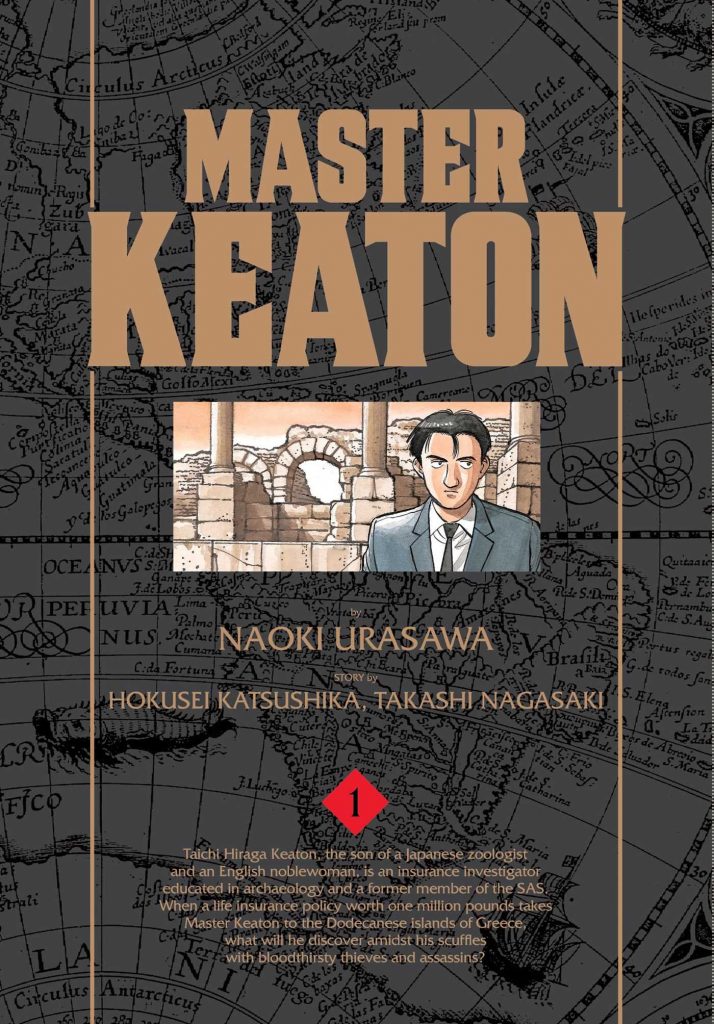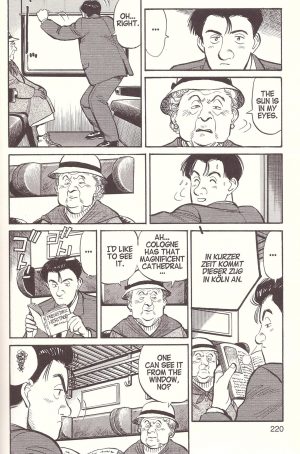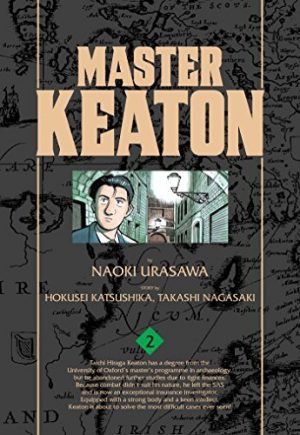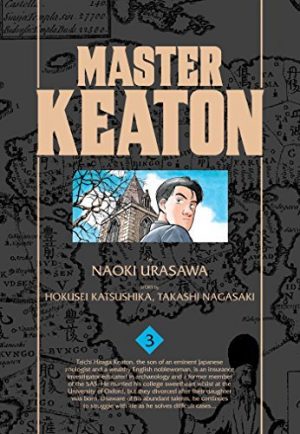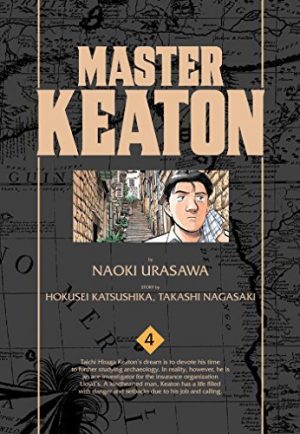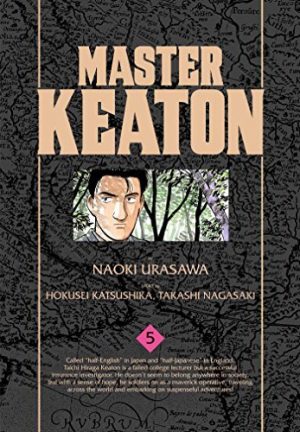Review by Frank Plowright
Before embarking on the 24 volumes of 20th Century Boys/21st Century Boys Naoki Urasawa warmed up from 1988 via a restrained eighteen volumes of insurance investigator Taichi Hiraga Keaton, although the Viz translations are larger editions reducing the total to twelve volumes. Urasawa worked with writers Hokusei Katsushika, in actuality Hajime Kimura adopting the alias of Japan’s most famous artist, and Takashi Nagasaki. Although the individual chapters originally appeared in the massive anthologies common to Japan, Master Keaton is actually very similar to US serialised comics. Each story runs between 24 and 30 pages, and while there are small elements of continuity, only the final outing concerning a former SAS colleague runs to three chapters.
The writers cover a large amount of bases by having Keaton the son of a Japanese zoologist and an English noblewoman, a qualified archaeologist who now lectures part-time at a university, and a former member of the UK’s elite fighting force the SAS. Why he’s taken his mother’s surname rather than his father’s seems to be down to it being more exotic in Japanese. While the constituent parts of Keaton’s background seem randomly thrown together, Katsushika and Nagasaki have carried out a considerable amount of research to ensure each is separately convincing. Keaton is presented as quiet and unassuming, often preoccupied with other matters, but the breadth of the knowledge he’s given feeds into every story. Combining everything feels a little contrived over the opening third of this collection, but consistency bolsters belief, and by the time Keaton’s family are introduced he’s a known quantity as far as his capabilities are concerned if not always what he’s thinking. This only applies to readers, not those pitting their wits against him.
Some influences are more obvious than others, Steven Poliakoff’s Caught on a Train surely feeding into a tale of a demanding elderly German woman and border crossings, but there’s an admirably diverse selection of situations explored. Because Keaton is primarily employed as an insurance investigator it opens doors to all kinds of situations and people.
Urusawa is a consummate storyteller. As the stories are structured similarly to a TV mystery drama, they require detailed explanations and Urusawa keeps these looking interesting by switching viewpoints as he draws attention to what will later be required. His way with Keaton is novel. He’s drawn as undistinguished and almost anonymous, important in ensuring he’s under-estimated, and generally unknowable. Between the character moments and action Urasawa must also turn his hand to the reproduction of archaeological treasures, and these are beautifully rendered. The book is almost all in black and white, but a few colour page are presented at the start.
A few bumpy spots, primarily cases of over-explaining, occur along the way, but Master Keaton being loved in Japan is easily understood. Bring on Master Keaton 2.
